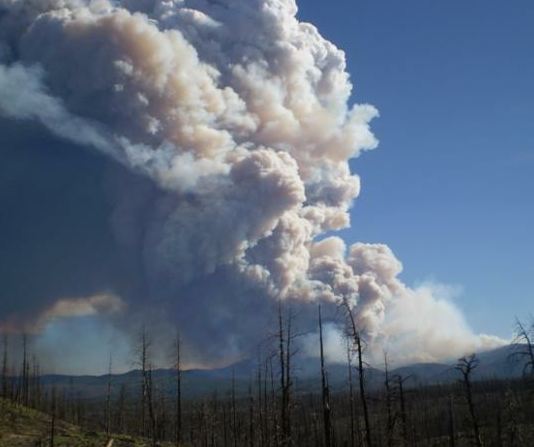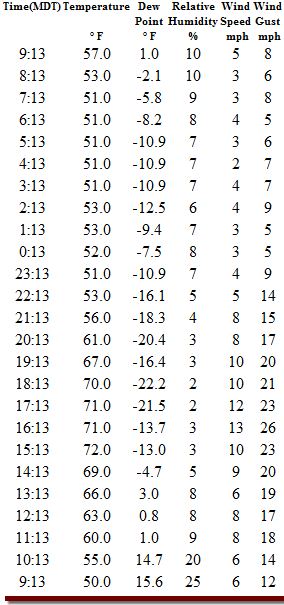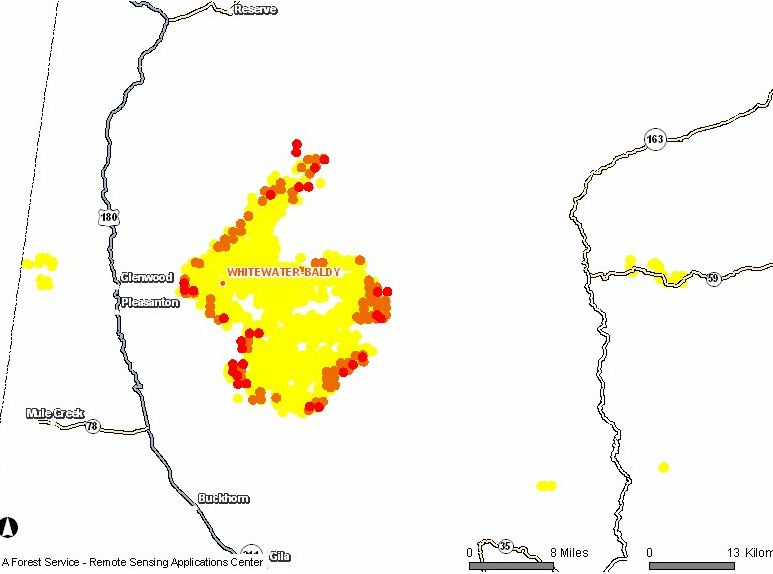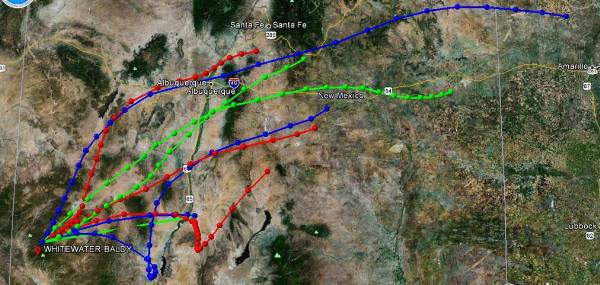
UPDATE at 8:32 p.m. MDT, May 28, 2012
We checked with Jerry Perry, a spokesperson for the Incident Management Team at the fire and received some updated information. Mr. Perry said burnout operations occurred in two locations on Monday, near the ghost town of Mogollon to help protect that community, and an area south of Mogollon where the spread of the fire dictated that a burnout needed to be executed in order to keep the fire from moving into unwanted areas.
The fire started on May 16 and the Type 1 Incident Management Team assumed command on May 26. The number of resources working on the fire has increased very slowly.
On Sunday there were five helicopters assigned, none of them Type 1 (the largest), according to Mr. Perry. On Monday there were nine helicopters: three Type 1, two Type 2, and three Type 3. These are small numbers of aircraft for a monster-sized fire. There were no air tankers working the 133,000-acre fire on Monday, because, according to Mr. Perry, “the terrain was not suitable for air tankers”.
The number of personnel assigned to the fire has increased to 1,112 and there are a total of 27 hand crews and 49 engines.
==================
Usually firefighters can count on “humidity recovery” during the night to slow the spread of wildfires. That higher humidity, usually increasing by several tens of percent, is absorbed by the vegetation and affects how fast a fire burns. Sunday night and early Monday morning, the relative humidity at the Mogollon weather station near the Whitewater-Baldy fire was between three and seven percent — extremely low. As the sun started to come up it began increasing and was at ten percent at 9:13 a.m. MDT; still very low.

The forecast for Monday at Glenwood, NM just west of the Whitewater-Baldy fire calls for the humidity to decrease again to around five percent and the winds will be from the southwest at 7 to 14 mph. The calmer winds will make it possible for helicopters and air tankers to support the firefighters with retardant and water drops. But the very low humidity and moderate winds should still encourage significant fire spread and smoke production.

On Sunday the fire grew by another 10,000 acres, bringing the total to about 133,000 acres. Firefighters took advantage of the calmer winds to do some burning out at the end of the long finger of fire on the northeast side, along Forest Road 141/Reserve Beaverhead Road near the Negrito Airstrip. If they can stop the fire in this area, it will be a step toward keeping the fire out of some more difficult terrain.
Almost all of the fire perimeter showed new growth on Sunday and officially the fire is zero percent contained. On Monday firefighters plan to conduct a burnout operation to help protect the ghost town of Mogollon, and will continue to burnout along Forest Road 141.
Below is something you don’t see produced by every Incident Management Team, a map showing the projected path of smoke from the Whitewater-Baldy Complex for May 28. Areas around Albuquerque, Belen, Socorro, Magdalena and Carrizozo will see smoke through the day, if the projections are correct. A higher resolution version of the map can be found HERE.

